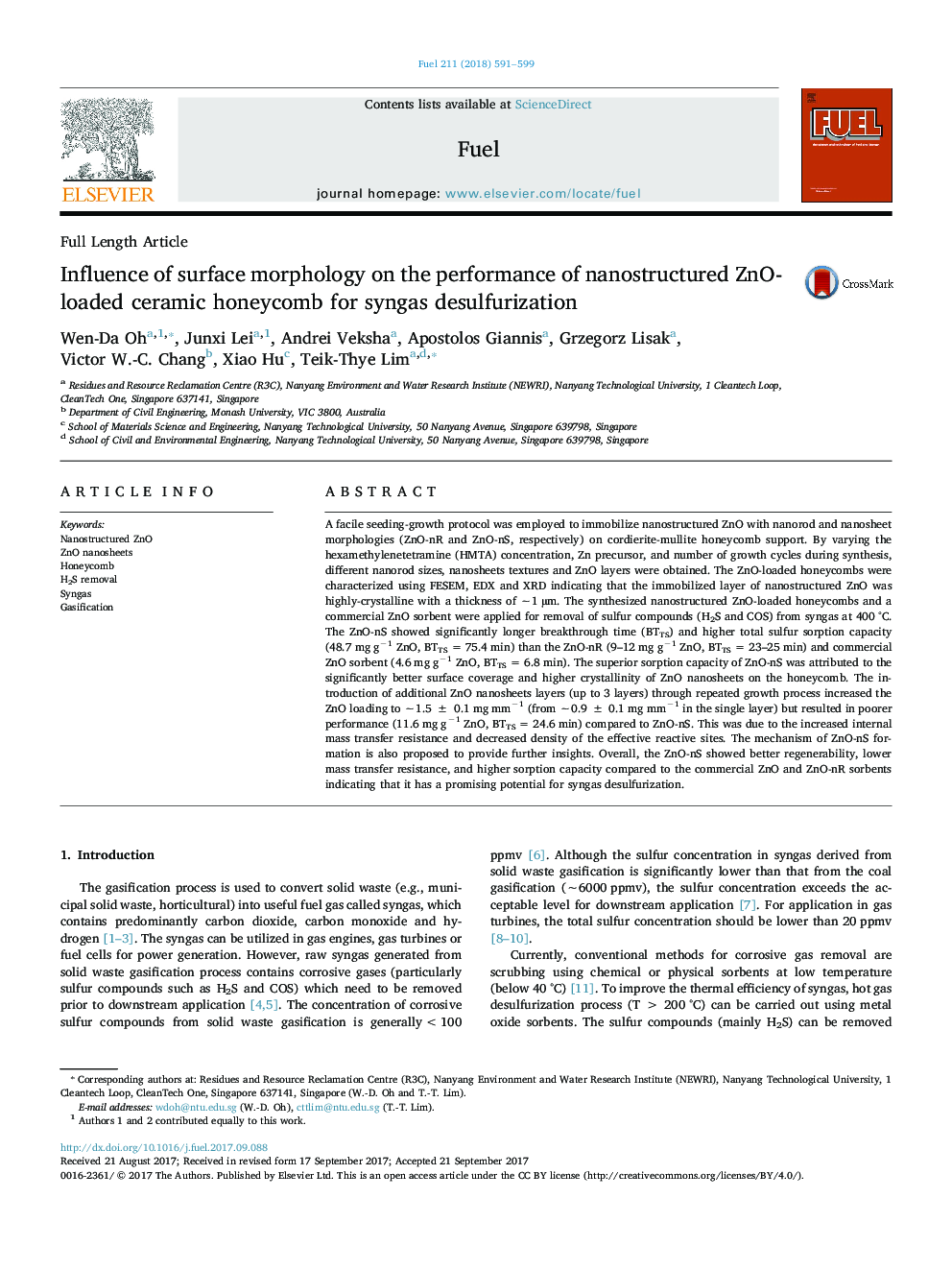| کد مقاله | کد نشریه | سال انتشار | مقاله انگلیسی | نسخه تمام متن |
|---|---|---|---|---|
| 6473553 | 1424953 | 2018 | 9 صفحه PDF | دانلود رایگان |
- ZnO nanorods (ZnO-nR) and nanosheets (ZnO-nS) were immobilized on honeycomb.
- The nanostructured ZnO-loaded honeycomb were used for syngas desulfurization.
- The mechanisms of ZnO-nS and ZnO-nR formation are proposed to provide further insights.
- ZnO-nS (single layer) present better performance than ZnO-nS (three layers), ZnO-nR and commercial ZnO.
- ZnO-nS has better regenerability and higher sorption capacity than other sorbents.
A facile seeding-growth protocol was employed to immobilize nanostructured ZnO with nanorod and nanosheet morphologies (ZnO-nR and ZnO-nS, respectively) on cordierite-mullite honeycomb support. By varying the hexamethylenetetramine (HMTA) concentration, Zn precursor, and number of growth cycles during synthesis, different nanorod sizes, nanosheets textures and ZnO layers were obtained. The ZnO-loaded honeycombs were characterized using FESEM, EDX and XRD indicating that the immobilized layer of nanostructured ZnO was highly-crystalline with a thickness of â¼1 µm. The synthesized nanostructured ZnO-loaded honeycombs and a commercial ZnO sorbent were applied for removal of sulfur compounds (H2S and COS) from syngas at 400 °C. The ZnO-nS showed significantly longer breakthrough time (BTTS) and higher total sulfur sorption capacity (48.7 mg gâ1 ZnO, BTTS = 75.4 min) than the ZnO-nR (9-12 mg gâ1 ZnO, BTTS = 23-25 min) and commercial ZnO sorbent (4.6 mg gâ1 ZnO, BTTS = 6.8 min). The superior sorption capacity of ZnO-nS was attributed to the significantly better surface coverage and higher crystallinity of ZnO nanosheets on the honeycomb. The introduction of additional ZnO nanosheets layers (up to 3 layers) through repeated growth process increased the ZnO loading to â¼1.5 ± 0.1 mg mmâ1 (from â¼0.9 ± 0.1 mg mmâ1 in the single layer) but resulted in poorer performance (11.6 mg gâ1 ZnO, BTTS = 24.6 min) compared to ZnO-nS. This was due to the increased internal mass transfer resistance and decreased density of the effective reactive sites. The mechanism of ZnO-nS formation is also proposed to provide further insights. Overall, the ZnO-nS showed better regenerability, lower mass transfer resistance, and higher sorption capacity compared to the commercial ZnO and ZnO-nR sorbents indicating that it has a promising potential for syngas desulfurization.
153
Journal: Fuel - Volume 211, 1 January 2018, Pages 591-599
